Design Projects
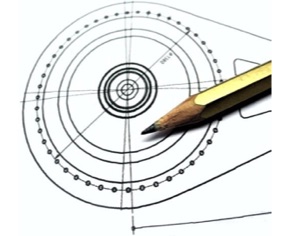
Doing it a better way has always been a big part of my interest in design. This has expressed itself in the range of design from modular and flexible furniture for my own use at university, to new products and service patents while at Corporate Design / Nortel Networks, and finally to residential design projects.
GettingOUT! Application Development - 2019
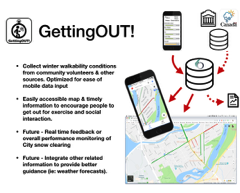
Conceptualized and drove the development of the GettingOUT! Application that is under development to provide timely relevant information for seniors and other vulnerable populations to know the winter sidewalk conditions so they can get out safely and more often.
Performed user requirements research and related systems and have driven the development via community resources and a weekend Hackathon.
iTrain Product Concept
- 2011
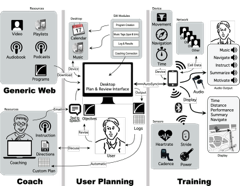
iTrain is an information & motivational fitness system that is integrated with a portable device (eg: iOS/Android). It provides simple cues (eg: beeps) or complex messages (eg: detailed voice commands) merged with music to enhance the users training & enjoyment.
The device provides audio cues based on a program that selects from audio cues, voice messages & music playlists that are programmed in response to time, user commands, or user/environmental factors.
The device guides the user through an exercise session providing information and cues which may include on time, workload and displacement.
The system is designed to seamlessly connect with a Coach to enhance training effectiveness.
iPhone Functional Enhancements - 2012
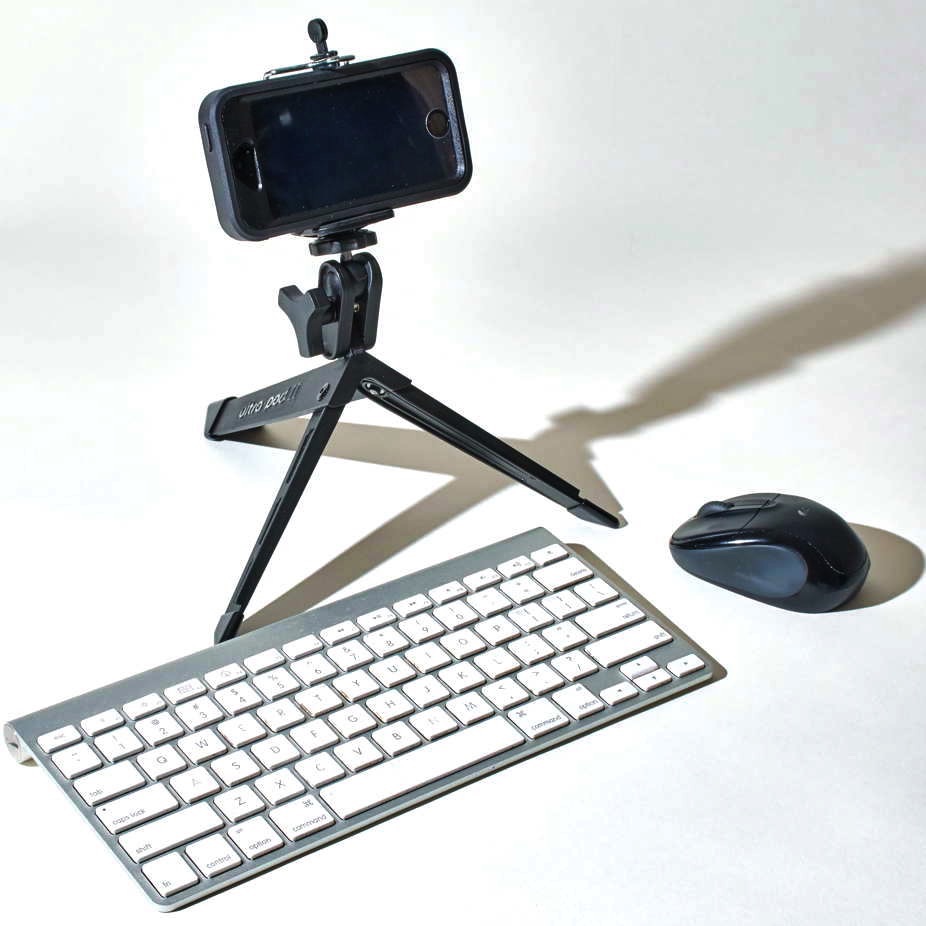
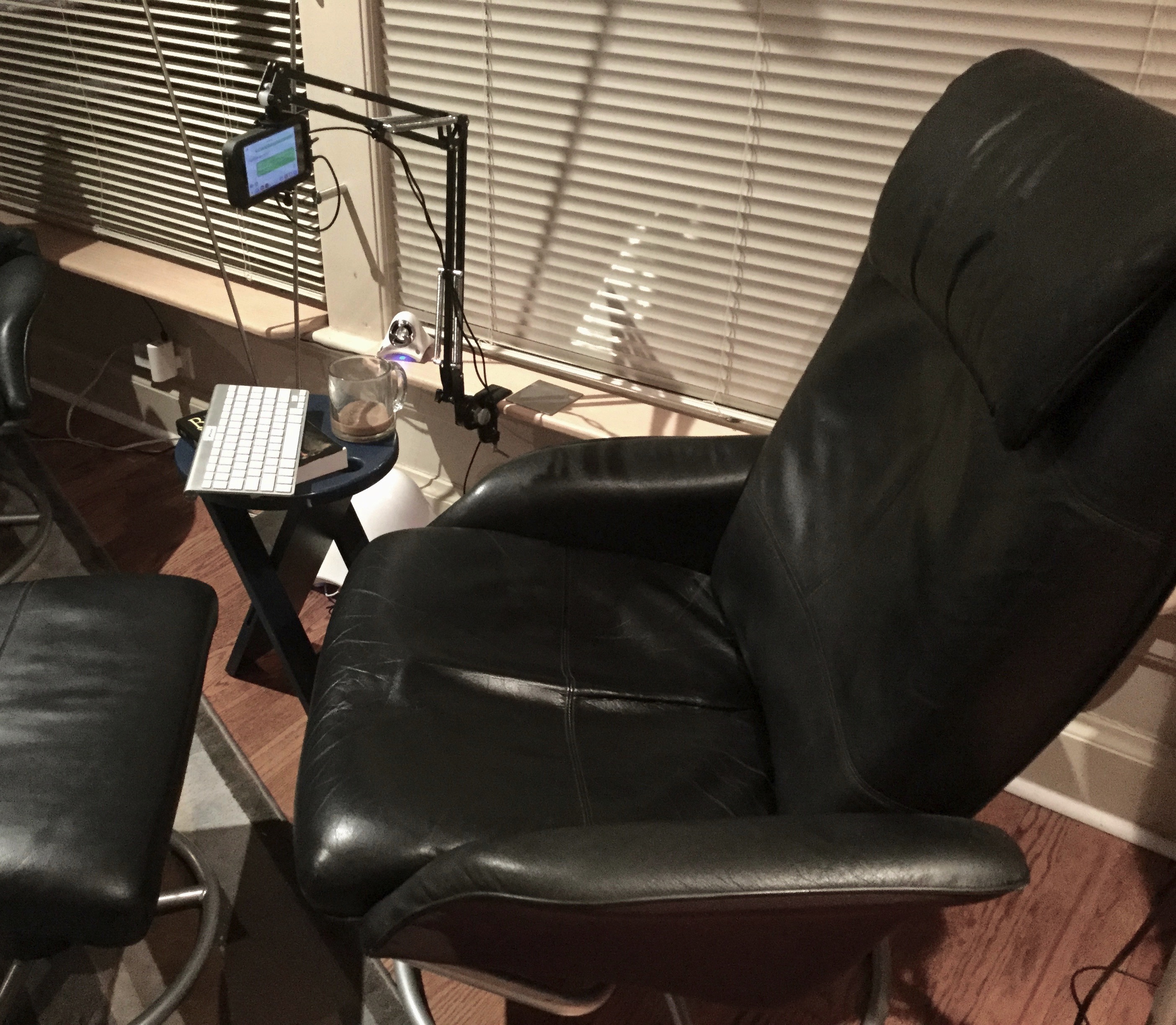
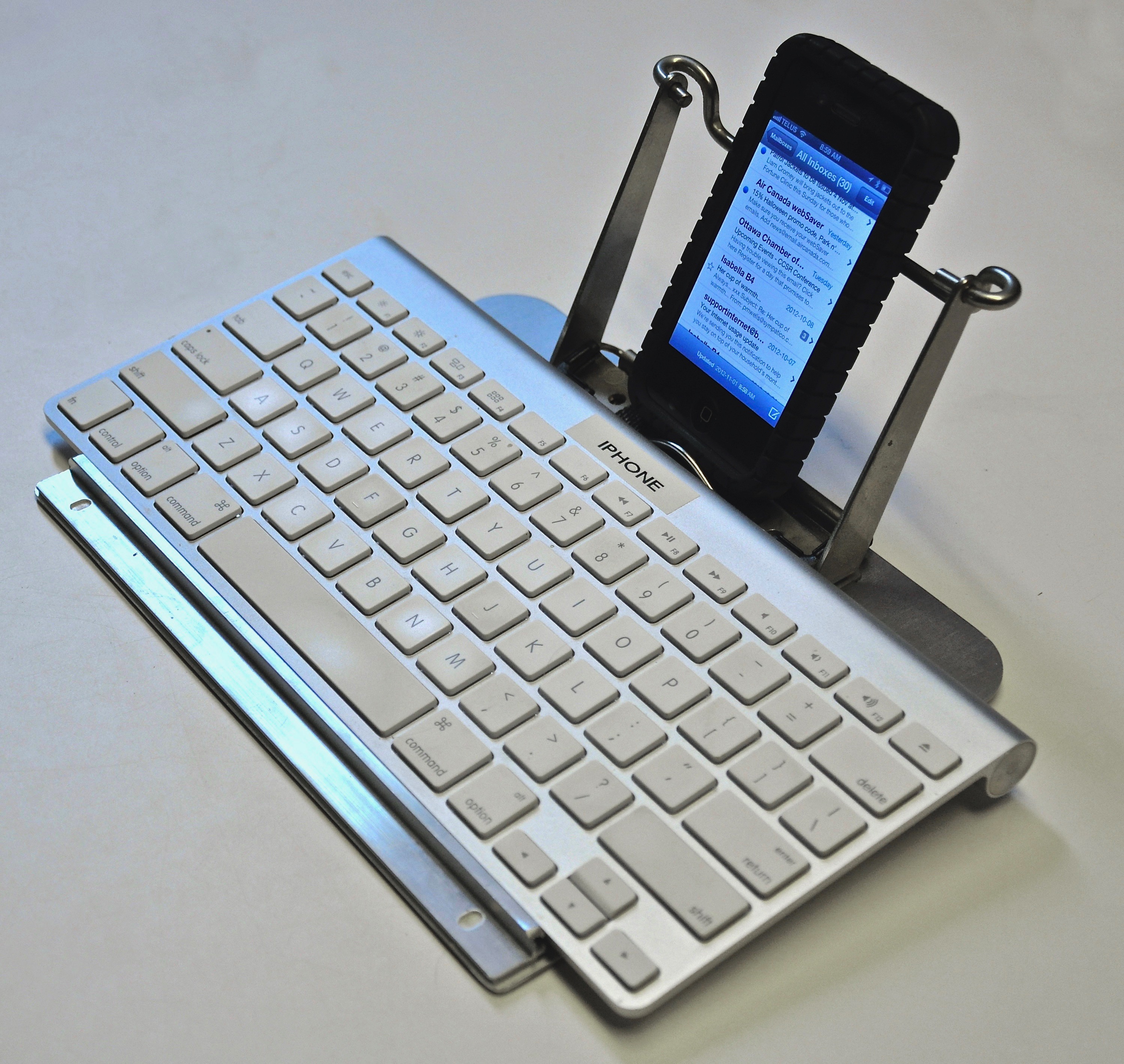
Mobile phones are incredibly powerful computers who's size is well suited to their intended mobile use. When travelling on business I realized that, with a few simple modifications, the need to bring a laptop was reduced by using the power inherent in my phone.
Fabrication of devices to hold the phone and coupling it with better input devices enabled my phone to be a useful travel computer, and a practical mobile device over the working day.
Graphic Information Presentation - 2011
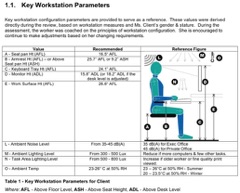
During my work as an Ergonomics Consultant with Performance by design it was necessary to summarize a variety of data recommendations for a given users office workstation.
This information had to be summarized and itemized effectively in a document which could be isolated from the main document to to drive specification, procurement and deployment.
Secondary Dwelling Unit - 2007

Designed modifications to existing residential home to create a Secondary Dwelling Unit. The design objective was to create an attractive space that provided an income source for the home owner, while minimizing the cost of the renovation to create the unit as well as to return the home to a single family configuration at some future date.
Produced working drawings for contractors, as well as marketing materials.
Merging Design Data
- 2006

During work to evaluate the interior workspace and sight-lines of the Landing Safety Officer (LSO) compartment on the City Class Frigates. I developed new ways to merge the available data to create sufficiently accurate CAD models to support the design modifications & design review.
To create the CAD model, I used 2D plans & photos of the ship in innovative ways to scale & situate the LSO Compartment geometry.
This model was not perfect but provides a good example of innovative problem solving & design support that was timely & sufficient.
Medical Clinic Design
- 2006
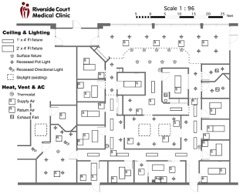
Designed the layout and fittings for a 6 doctor Family Medicine Clinic. Design included layout, fittings, and support equipment. The design objective was to create an attractive, efficient and practical space, while minimizing the cost of the fit out.
Worked with clients through interactive design reviews to define requirements captured in working plans and drawings for contractors.
Residential Bathroom
- 2005

Performed renovation design for existing an residential home to enlarge, upgrade & modernize an existing bathroom. CAD was used to evaluate design options and generate renderings for the client.
Performed all design and specification work and worked directly with all trades providing detailed CAD plans and managing work as performed.
eSurvey Tool - 2001
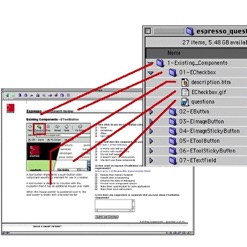
At Espial, it was required to collect information about user preferences. To do this I developed a questionnaire to be distributed to customers. I realized that this process would be repeated, so I worked with the firms software development personnel to develop a system to automatically create rich web questionnaires automatically based on text files and images in a structured file system.
Personal Integrated Communicator - 1995
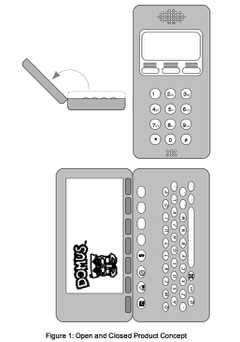
Service concept was developed at Nortel's Corporate Design Group. The product concept/interface concept exploration was built on ideas developed by design teams in 1995.
My proposal was to explore the interface style and system functionality to enhance user's control of their communications environment, as well as enhancing monitoring and control of both broadband access services to the home.
The goal was to explore potential product & service opportunities resulting from the integration of product concepts from the Wireless Group, Consumer Communications Group.
Waterproof & Ruggedized Personal Stereo - 1982
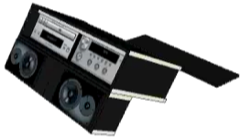
Imagine that you want to ruggedize and waterproof a personal bookshelf stereo system. The two components were located in a cooled plywood box with aluminum angle trim to strengthen and which also served to align the sealing base plate. The front of the sealed unit was created by the 2 speakers that were incorporated into larger matching rugged wooden boxes which fitted against each other. Both the front and back elements were secured with latches and sealed by a flexible “O” ring flange.
University Bed Optimized for Transport & Assembly - 1980
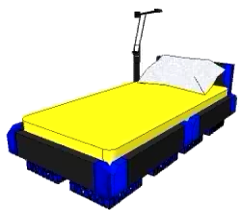
Like most students I had to carry my life from place to place and it had to fit in, or on, a compact car. My university bed was the design solution to this problem. The bed had to be easy to carry, work in concert with my other moving systems, and provide access to storage when in those small university apartments.
Between terms and for transport, all of my books were carried in milk crates so they were available to serve as the base of the bed.
University Desk Optimized for Transport & Assembly - 1980
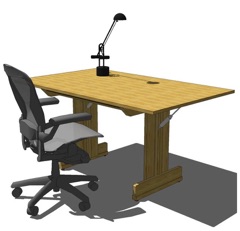
Like most students I had to carry my life from place to place and it had to fit in, or on, a compact car. My university desk was the design solution to this problem. The desk was large but folded completely flat into a top, and two legs.
The pedestal legs were attached to the top by means of 2 bolts secured by wing-nuts so no tools were required. Once the legs had been attached, they were secured by a cable on each side which as attached to a pin across the leg sections by means of a hook & turnbuckle. Once attached, the cables were secured & balanced by a turnbuckle. The resulting assembly was strong & stiff.
Modular Freestanding Book Transport & Storage - 1980
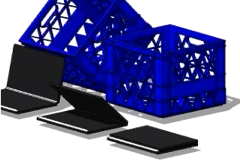
Imagine you carry all of your university booka in milk crates. When you get to your apartment, you want a flexible way to store & display your books.
Imagine 2 pieces of plywood, which are joined along the back with a piano hinge. The front edge of the lower piece has a triangular extruded aluminum section. At the new apartment, they are placed on the floor, along a wall, or by the desk. Each top is then lifted up and hinged back. The milk crate can then be tipped back and lifted on top of the support, with the front edge nested onto the aluminum section.
Hybrid Solar Collector
- 1978
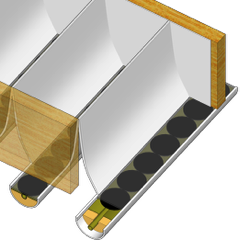
Unlike the majority of conventional solar collector panels, this unit assembly was an integral part of the roof frame. An arched plastic cover sheet was mounted on the top surface of the beam. Between each beam, were fitted the collector troughs that gather & concentrate the sunlight onto a hybrid collector.
The sunlight was concentrated silicon power cells mounted atop a copper strip thereby collecting both electrical & thermal energy.
Remote Control Gas
Powered Hovercraft
- 1976
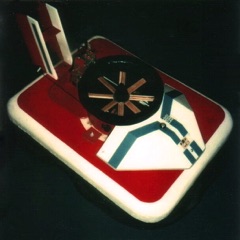
I had managed to keep all of my fingers into my teenage years so decided to create a twin gas powered engine remote control hovercraft. The body was fabricated from a styrene box packing, the skirt from old bicycle inner-tubes. Body and fins from balsa, and the fan cowling custom fabricated from fiberglass. The fan created from laminated plywood.
Well Water Level Indicator
- 1977
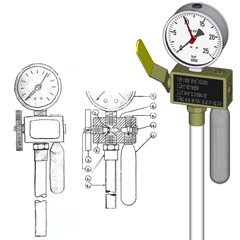
A university engineering project to provide a reading of the water depth level in a well. This device had no moving parts and was extremely simple to manufacture & use. Using compressed carbon dioxide from a cartridge, the system pressurizes the tube down the well to the point that the gass escapes by bubbling out from the base of the tube. Therefore the maximum pressure reflects the height of the water above the tube base. This height is indicated by means of a calibrated max pressure needle that can be reset manually.
Remote Control
Steam Powered Car
- 1974
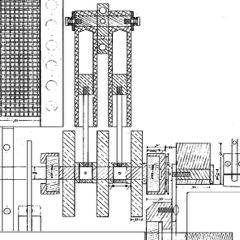
Armed only with a drafting board in the basement, I designed and built a host of different mechanical devices. After creating a fan powered remote controlled car, which tore about parking lots, I turned my attention to creating a steam engine which would power another remote control car fitted with steering, brakes and throttle.
The design was conceived to provide the maximum simplicity and power in an engine design which could be fabricated with my limited machining capabilities and resources.
Model Trains on Steroids - 1972
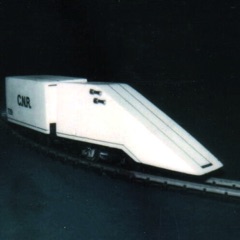
Normal well-adjusted children set up their train sets and live the adventure as their detailed scale model locomotives trundle up and down the richly created scale diorama. Other children tear apart the scale models to extract the motor elements and adjust the transformers to provide a higher voltage than recommended. This resulted in a small “racing” train that tore around the track… launching off at corners and threatening the family pet.